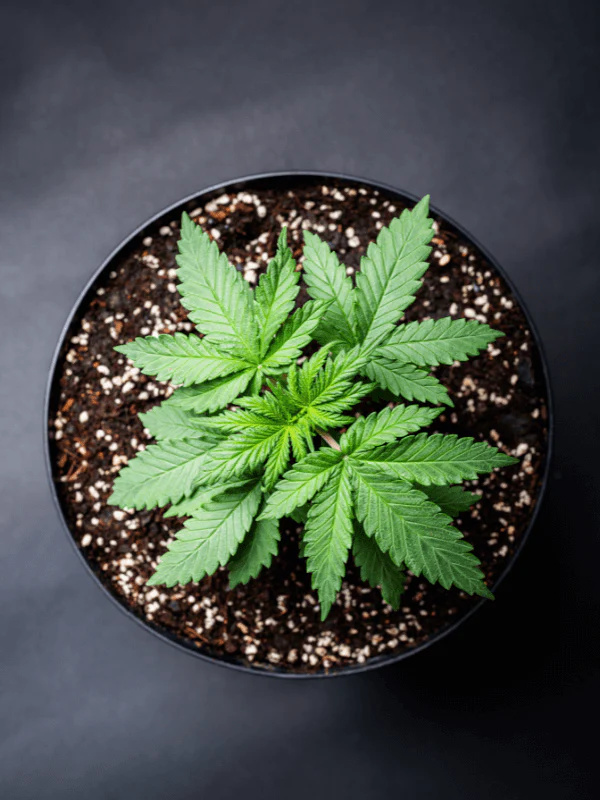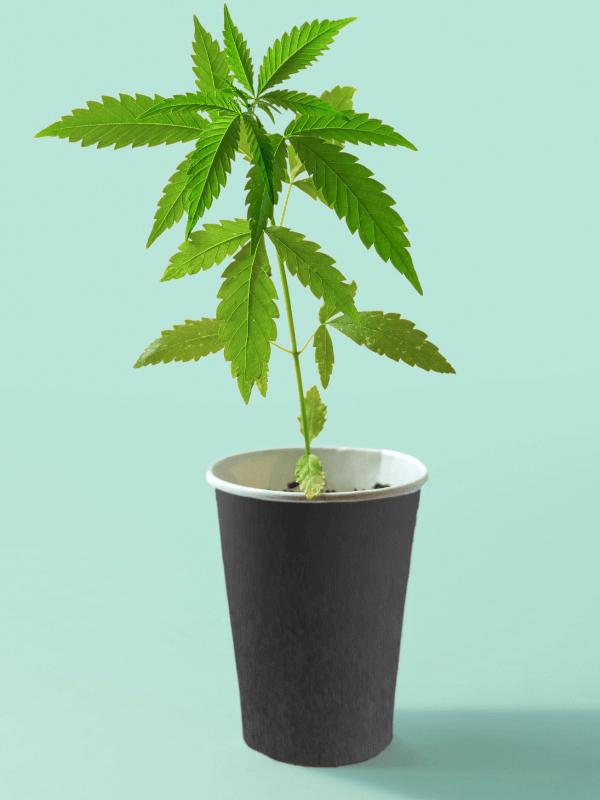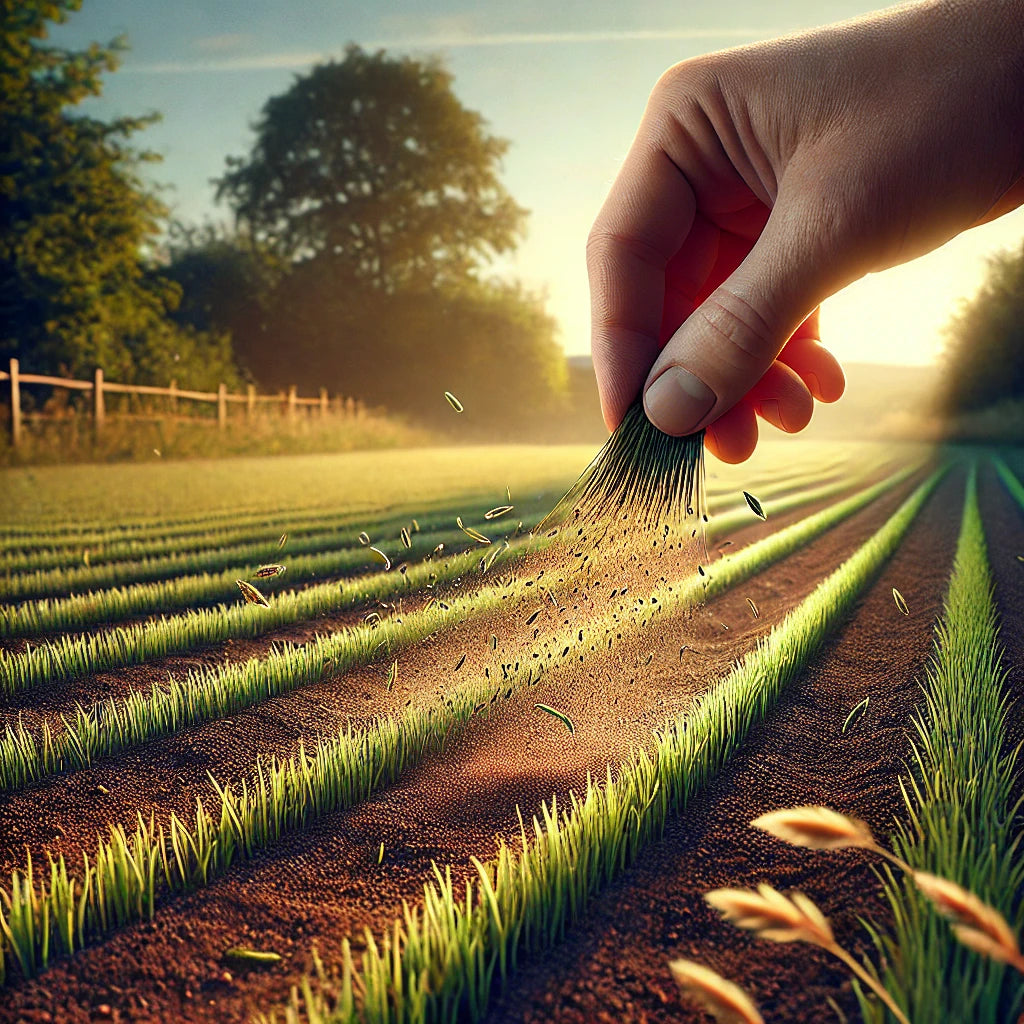🌿 Grass seeds : How to do it right
Grass seed is the basis for a dense, green lawn - but getting there requires a little knowledge and patience.
Whether you want to create a new lawn or repair bare patches, it all depends on the right time, the right amount and careful care. Here you can find out what is important when sowing, sowing and germinating grass seed.
Spreading grass seed
Before you spread the grass seeds, you should prepare the soil well. Remove old grass, moss and weeds to give the seeds the best starting conditions. Loose, slightly moist soil helps the seeds to take root quickly.
A spreader trolley is suitable for spreading the grass seeds evenly. If you don't have one to hand, you can also sow them by hand - it helps to mentally divide the area into small sections. After spreading, work the seeds lightly into the soil with a rake. A thin layer of sand or fine soil protects them from wind and hungry birds. Regular watering is then crucial, especially in the first few days. The soil should remain constantly moist without puddles forming.

Sowing grass seed: when is the best time?
When you sow grass seed is crucial to its success. There are generally two ideal time windows:
- In spring (April to May): The soil temperature rises and the seeds germinate quickly, while the days are longer, which favours growth.
- In autumn (September to early October): The soil is still warm from the summer and frequent rainfall keeps it well moist, providing the seedlings with optimal conditions to form strong roots until winter.
An important tip: Make sure that the soil temperature is at least 10 °C, otherwise the seeds will germinate slowly or not at all.
Sowing grass seed: what you should look out for
Sowing correctly is a crucial step on the way to your dream lawn. In addition to the right time, soil quality, the right technique and the optimum amount of seed all play an important role. Before sowing, loosen the soil thoroughly and remove stones and roots. A finely crumbled surface makes it easier for the seeds to germinate.
When sowing, less is often more. For a new lawn, you should use around 20 to 25 grams of grass seed per square metre. If you are reseeding existing lawns, 10 to 15 grams is sufficient. After sowing, gently work the seeds into the soil, for example with a rake or roller. Regular watering is then important to promote germination. The soil must never dry out in the first three weeks.

When can you sow grass seed?
Many hobby gardeners ask themselves when exactly is the right time to sow seeds. The answer: spring or autumn - depending on the weather and soil conditions. Spring is the starting point for the new greenery as soon as the soil has warmed up to at least 10 °C. It is important that there is no threat of frost at night and that the soil remains sufficiently moist.
Autumn sowing between September and October is ideal, as the soil still benefits from the summer warmth. It is important that there is no threat of night frosts and that the soil remains sufficiently moist.
How long does grass seed take to germinate?
How quickly the first blades sprout depends on the type of grass, the temperature and the care. It usually takes between 7 and 21 days for the seeds to germinate. Consistent moisture is particularly important: if the soil dries out during the germination phase, growth is halted.
These factors influence the germination period:
- Soil temperature: 15 to 20 °C is optimal.
- Moisture: The soil should be slightly moist throughout, but not wet.
- Sunlight: Semi-shaded areas take a little longer to germinate.
How much grass seed should you use per square metre?
The right amount of grass seed is crucial for a dense, even lawn. Here is a brief overview:
- New establishment: 20-25 g per m²
- Re-seeding: 10-15 g per m²
- Sports and play turf: 25-30 g per m²
Avoid sowing too many seeds at once, as sowing too densely will result in the young blades of grass taking light and nutrients away from each other.
Can grass seeds survive frost?
Grass seed is sensitive to frost. If you sow in autumn, the temperatures should remain stable and there should be no more threat of ground frost. For spring sowing, wait until the cold nights are over. Young seedlings are sensitive to frost and could be damaged. If you want to start early in the year, you can rely on special grass varieties that are more resistant to cold.

How long does grass seed last?
Many hobby gardeners still have old grass seeds from last year, but how long do they actually keep? Grass seeds generally remain viable for around two to three years, provided they are stored in a cool, dry and dark place. Older seeds gradually lose their germination capacity, so you will need to sow more of them. If you are unsure, you can do a germination test: simply sprinkle a handful of seeds on damp kitchen paper and keep them moist for a few days. If you can hardly see any sprouts after a week, you should buy fresh seeds instead.
Why do grass seeds sometimes not sprout?
Nothing is more frustrating than waiting days for the first stalks - and nothing happens. Here are the most common reasons:
- The soil is too cold (below 10 °C).
- The seeds have been worked too deeply into the soil.
- The soil is too dry or too firm.
- Birds have eaten the seeds.
- The seeds are too old and have lost their germination capacity.



















